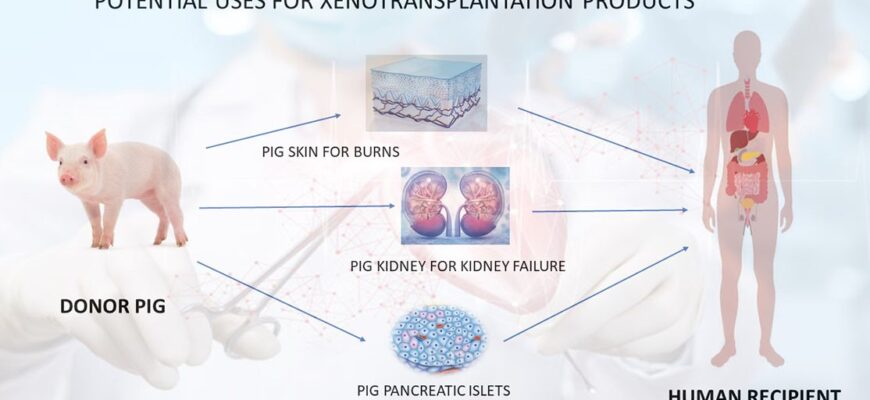In a development that sounds more like science fiction than modern medicine, researchers in China have achieved a significant milestone, successfully transplanting a genetically modified pig lung into a human recipient. While the procedure involved a brain-dead patient and the organ functioned for a finite period, this breakthrough, published in Nature Medicine, represents a monumental leap in the field of xenotransplantation and offers a tangible glimmer of hope for the millions suffering from end-stage organ failure.
A Pioneering Procedure: Nine Days of Function
The groundbreaking operation, conducted on a 39-year-old male with confirmed brain death, saw the porcine lung sustain its function for nine crucial days. This initial period, though limited, provided invaluable data and demonstrated the remarkable viability of cross-species organ transplantation when meticulously engineered. For a field historically fraught with severe immune rejection issues, simply having the organ function for such a duration in a human body is a testament to years of dedicated research and genetic innovation.
Lungs are notoriously complex organs to transplant, even between humans. Their intricate network of blood vessels poses a heightened risk of blood clot formation and immune rejection, making them one of the most challenging organs to work with. The fact that a pig`s lung could overcome these immediate hurdles, even partially, underscores the sophistication of the approach taken by the Chinese team.
The Genetic Blueprint for Success
The key to this preliminary success lies in advanced genetic engineering. The donor pig was not just any farm animal; it was a specially modified specimen. Researchers meticulously edited its genome, performing two critical modifications:
- Removal of Three Immune-Triggering Genes: Three specific genes in the pig, known to provoke a fierce immune response in humans, were deactivated. This essentially disarmed some of the primary triggers for hyperacute rejection.
- Addition of Three Human Protective Genes: Conversely, three human genes, designed to protect the transplanted organ from the recipient`s immune system, were introduced into the pig`s genome. This created a more “human-compatible” organ, effectively camouflaging it from the body`s natural defenses.
This genetic manipulation is the bedrock of modern xenotransplantation, aiming to bridge the biological gap between species and allow the human body to accept foreign tissues without immediate, catastrophic rejection.
Navigating the Challenges: A Path Forward
While the initial days post-surgery showed no signs of overt rejection or infection, the lung later experienced tissue damage. This was primarily attributed to temporary oxygen deprivation during the transplantation procedure itself and, subsequently, an attack by antibodies. However, the report noted that these changes began to diminish by the ninth day, suggesting a potential for recovery and adaptation had the experiment continued. The study was ultimately halted at the family`s request, underscoring the ethical complexities inherent in such pioneering work.
Experts universally agree that these findings, despite the challenges encountered, are profoundly significant. They provide a crucial roadmap for future clinical trials, highlighting areas for refinement and demonstrating the immense potential of this technology. The journey from a farm animal to a life-saving medical device is, evidently, a demanding one, but the progress is undeniable.
A Lifeline for the Future?
The implications of successful xenotransplantation are staggering. The global shortage of human donor organs is a critical public health crisis, leaving countless patients to suffer and often die while on transplant waiting lists. For individuals with terminal respiratory diseases, a pig lung, perfected through ongoing research, could represent their last and only chance at life. The prospect of an “off-the-shelf” organ, readily available and genetically tailored to reduce rejection, could revolutionize transplant medicine, alleviating suffering and extending lives on an unprecedented scale.
While the road ahead is still long, paved with further research, ethical considerations, and clinical trials, this achievement in China solidifies a new frontier in medicine. Who knew that pigs, often relegated to agricultural roles, would one day become the unlikely heroes poised to reshape the future of human health? The scientific community, with a blend of caution and fervent optimism, now watches eagerly as this remarkable journey unfolds.







